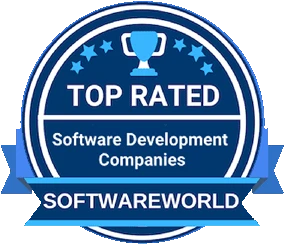
























































































































































































Clarisco requests your action to continue
The above mentioned products are used only for clear understanding. We don't have control of the brand and are not doing direct & indirect partnerships with them. We are also not doing promoting activities for them.
In 2009, a small group of developers launched an open-source digital currency called Bitcoin. At its initiation, few could have predicted how it would upgrade banking, payments and asset ownership across the globe. Fast forward to 2026, and cryptocurrency trading via platforms has became a mainstream with billions of dollars in daily volume.
According to industry estimates, the global crypto exchange market is projected to reach tens of billions of dollars within this decade. Now, think about this: if you had the platform that enabled that trading, how would you capitalise on the opportunity? In this blog, we’ll learn how to launch a Cryptocurrency Exchange in 2026, covering everything from what a crypto exchange is to legal and budgetary considerations, and step-by-step instructions on how to build one.
Even if you're looking for a 'crypto exchange clone script', engaging a 'crypto exchange development company' or opting for 'white label crypto exchange development', we've got you covered.
A crypto exchange is a digital marketplace or platform where users can buy, sell, trade, or swap cryptocurrencies via the infrastructure that the exchange operator provides. It functions similarly to a stock exchange but for digital assets. Key components include order-matching versus order-book engines, user wallets, deposits and withdrawals, KYC/AML onboarding, liquidity, and often fee or spread-based monetisation.
o Centralised Exchanges (CEX) - run by a company or entity; high liquidity, fast trades.
o Decentralised Exchanges (DEX) - peer-to-peer, often smart-contract-based, with less intermediary control.
o Hybrid / P2P Models - mixing features, often regionally customized.
In launching an exchange, you’re effectively building the platform, the infrastructure, the trust, and the liquidity. Even if you choose a crypto exchange clone script or take on white label crypto exchange development.
'THE STRONG MARKET GROWTH.' Yes, the digital asset ecosystem is growing with new users, regions, and asset types like tokenized real-world assets getting into the fray. For example, our report indicates centralized exchanges still handle over 87% of global crypto trading volume.
Many regions remain underserved due to regulatory complexity, localisation issues, or poor infrastructure. With tech like staking, DeFi integrations, tokenised assets, mobile trading, and AI risk tools, new exchanges can compete by offering better UX, faster execution, and more features.
A well-run exchange opens diversified revenue streams through trading fees, listing fees, and premium services. While regulation remains an important factor (see next section), 2026 sees more mature frameworks globally, as it gives well-prepared operators an upper hand.
Budgeting for a crypto exchange changes depending on region, features, licensing costs, liquidity, and technology choices. Some benchmark figures are,
o For a minimal viable product (MVP) exchange, using a 'crypto exchange clone script' or 'white label crypto exchange development' route, costs can start around USD $15,000-30,000, according to one source.
o A mid-tier build with custom features, moderate scaling, and decent liquidity might cost USD $50,000-120,000 or more.
o A fully custom crypto exchange development, enterprise-grade exchange with a large user base, derivatives, global fiat support, and heavy compliance may cost USD $100,000-500,000+ or more.
Launching an exchange is not purely a technical challenge, regulatory and legal compliance an important things to consider. Each jurisdiction is different.
Licensing and regulation
Many countries treat crypto exchanges as Virtual Asset Service Providers (VASPs) or money transmission businesses (MSBs). They require registration, licensing, AML/KYC systems, and regular audits.
Example jurisdictions:
1.United States: VASP frameworks, individual state money-transmitter licences.
2.European Union: The Markets in Crypto‑Assets Regulation (MiCAR)-type frameworks now apply.
3.United Kingdom: The regulatory roadmap signals full crypto asset regulation by 2026.
4.India: Under the PMLA (Prevention of Money Laundering Act) and the 'reporting entities' regime, crypto exchanges must comply with AML/KYC.
5.Jurisdictions: Some small islands or 'crypto-friendly' states offer lower thresholds, but reputational risk may be higher.
When planning your exchange launch, decide which jurisdictions you will serve, where you will be legally domiciled, and build your tech and business around the required licences. If you're partnering with a crypto exchange development company to confirm that compliance is built into the platform from day one.
Without a compelling revenue model, the operating cost and compliance burden will erode profit. So make sure your crypto exchange platform consists of the following revenue streams.
o Trading fees for each executed trade.
o Withdrawal/deposit fees or spread fees on fiat/crypto movement.
o Listing fees from token issuers wanting to appear on your platform.
o Margin, futures/derivatives trading fees.
o Staking or yield services: offer asset-holders staking/interest, take a cut.
o White label or technology licensing: if you developed your platform, you might license it out.
o Premium services/ VIP tiers: faster support, exclusive tokens, etc.
o Advertising/ecosystem/token launchpad: host token launches, partner programmes.
o Fiat on-ramp/merchant services: integrate payments, services for non-crypto users.
This is a high-level roadmap, informed by existing guides, for building a successful crypto exchange.
1.Business model & target market
o Decide on region, user types, asset support, fiat currencies, and trading pairs.
o Choose your development route: full custom, 'white label crypto exchange development', or 'crypto exchange clone script'.
2.Legal & compliance setup
o Choose the jurisdiction for the entity, licensing.
o Prepare compliance policies: KYC, AML, sanctions, custody, risk monitoring.
o Engage legal/advisory support.
3.Technology partner & architecture
o Choose whether to use a company specialised in exchange builds or in-house.
o Tech stack: wallets, matching engine, order-book, UI/UX, admin panel, APIs.
o If using a 'crypto exchange clone script' or 'white label crypto exchange development', evaluate the vendor’s security and customisability.
4.Design & development
o Front end: user app, onboarding, trading dashboard.
o Back end: trading engine, wallets, deposit/withdrawal modules, fiat gateway, KYC/AML engine.
o Administrative panel, reporting, compliance workflows.
5.Security & testing
o Penetration testing, security audit, wallet audits, load testing, and disaster recovery.
o Ensure legal / compliance flows are implemented.
6.Liquidity acquisition & integration
o Integrate market-making or connect to external exchanges for liquidity. Without liquidity, users will find the platform unattractive.
o Onboard banking/fiat partners if you support fiat.
7.Launch & go-to-market
o Soft launch / Beta: invite limited users, test real trading, fix issues.
o Marketing: target crypto communities, influencers, affiliate programmes, and listing announcements.
o Expand: add more trading pairs, fiat corridors, derivatives, and international reach.
8.Operation & scaling
o Ongoing monitoring: compliance updates, security patches, performance scaling.
o User support, community building, referral/loyalty programmes.
o Regular audits, upgrades, and regulatory reporting.
For someone who thinks this business won't work out in 2026 or not, just remember, 'Platforms don’t just facilitate trades - they build trust, liquidity, and community. Build that first, and the trades will follow.' Make sure you partner with a trustworthy crypto exchange development company to speed up the process now and get ready to dominate the market in 2026.
Our trustworthy and happy Clients

200+

served Clients with a happy smile
Awards & Recognition
We are extremely pleased that reputable publications around the world recognised our superior work.




We'd Love To Hear From You!
Know your requirement, our technical expert will schedule a call and discuss your idea in detail. All information will be kept confidential.

Plot No. 29, 30, Iswarya Nagar,
Madakkulam, Tamil Nadu 625003, India
Business@clarisco.com +91 9442430551Monday-Saturday: 10am - 7pm
Sunday: Closed
